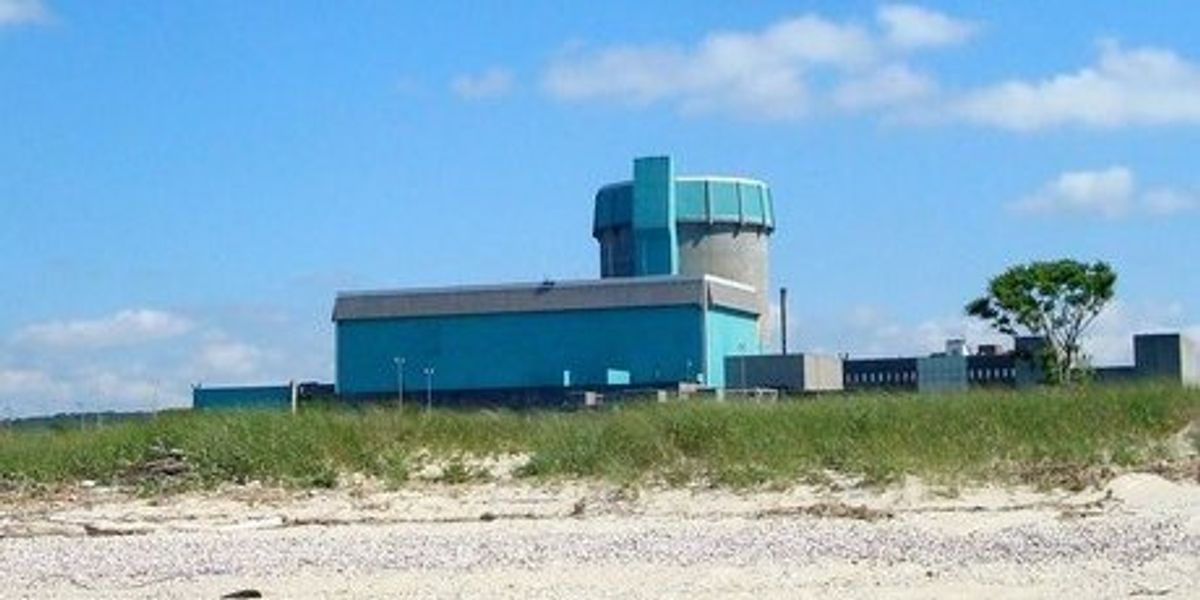Yesterday, a year after the evacuation of tens of thousands of residents near Fukushima, I found myself driving on Long Island’s scenic North Fork, cursing the traffic on the ever-crowded Long Island Expressway and remembering the sad saga of the Shoreham nuclear power plant.
Upon completion of the plant in the early 1980s, at a site [photo above] near Brookhaven National Laboratory on the island’s north shore facing Connecticut, the county’s residents voted against allowing it to operate on grounds that they could not possibly be evacuated promptly in the event of an emergency. As public opposition steadily grew, to nearly 75 percent after the Chernobyl catastrophe in 1986, the state government ordered officials not to approve any utility-sponsored evacuation plan. That killed the plant, forcing Long Island to scramble for other energy sources. To this day, its residents pay some of the highest electricity rates in the nation.
Multiply Shoreham by 54, and that’s the situation the Japanese may be in. As of late April, when the country’s last two reactors not already turned off for inspections are shut down, all 54 will be out of action, leaving the country without 30 percent of the generating capacity it normally counts on.
In the next weeks, people living near the Oi reactor complex, which serves Kyoto and Osaka, will be asked by the Japanese government to allow the two newest of the four reactors to be restarted. They were the first reactors to have passed post-Fukushima stress tests and therefore make a good test case, from the government’s point of view.
What will make this an especially challenging case—and many to follow even more challenging—is that Japan is having to expand emergency evacuation zones, consistent with international norms. That means the government almost certainly will have to allow wider groups of local populations to have a say in whether reactors restart.
Guidelines expected in April will stretch Japan’s current 10-kilometer evacuation zone for major accidents to 30 km. But according to a Wall Street Journal analysis published this week, more than 7 million Japanese living within about 30 km of a nuclear plant “lack reliable means of being warned, evacuated or protected by medicine against airborne radiation.”
Because of the well reported historic coziness between Japan’s nuclear industry, regulators, and officials, it’s clear that many of the country’s existing rules are far behind international norms. It’s to be expected, accordingly, that utility representatives and regulators will face a lot of touch questions wherever and whenever authority to restart a reactor is sought.
In each and every reactor restart debate, human safety will be pitted against the prospect of higher electricity rates and greater likelihood of blackouts and brownouts. But Shoreham showed that in such situations, citizens sometimes opt to pay higher rates for long periods of times and suffer some inconveniences rather than live in fear that they and their loved ones would be unable to escape a nuclear catastrophe.



